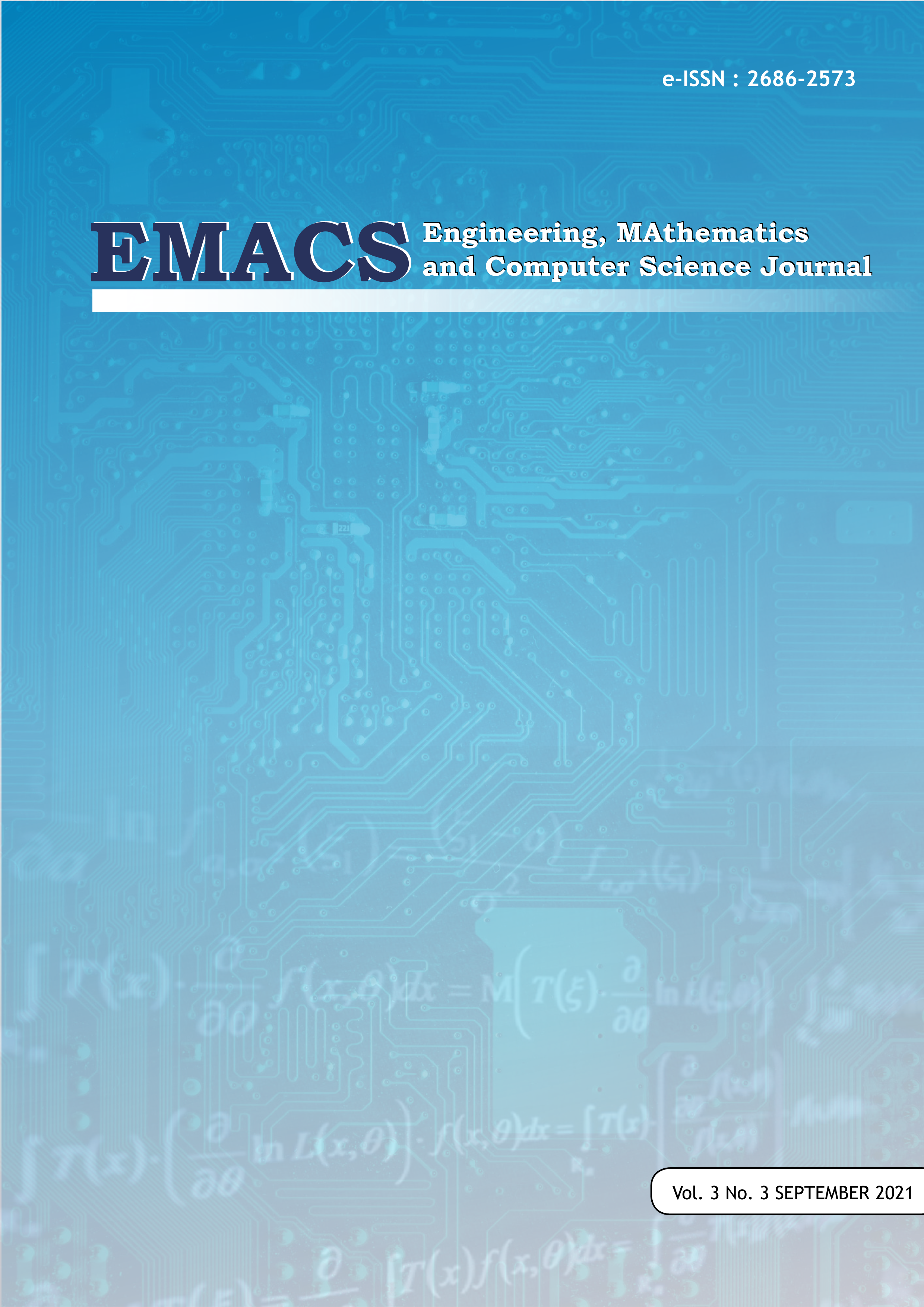Data Migration Technique Options on Reforming Jiwasraya's Existing Database
DOI:
https://doi.org/10.21512/emacsjournal.v3i3.7781Keywords:
Database Integration, Digital Technology in Insurance, Jiwasraya InsuranceAbstract
PT Asuransi Jiwasraya has been facing a crisis since 2020, which later probably demand them to reconstruct their insurance policy. Nothing is decided aside from the reconstruction idea. This is a hard task to deal with as there is a high risk to be borne along. In the worst case, bankruptcy awaits. As technology has taken over most industries, including insurance, it is only normal for the company to take advantage of the applied technology. However, it is still unknown whether the database used could help fulfill the mission. Considering loads of data might be higher by year, it will be more efficient to use the integrated database to transfer the whole data into a new-adapted database rather than creating a new one and manually adapt then add the data. This could be done by doing a Bottom-up approach that occurs in two big steps. This is the safest choice now which is handy and possible.
References
Ashmarina, S., Sarmento, A., & Vochozka, M. (Eds.). (2020). Digital Transformation of the Economy: Challenges, Trends and New Opportunities. Springer.
Eling, M., & Lehmann, M. (2018). The impact of digitalization on the insurance value chain and the insurability of risks. The Geneva papers on risk and insurance-issues and practice, 43(3), 359-396.
Gusti, G. P. (2019). Analysis of the cause of loss of PT. Asuransi Jiwasraya (Persero). Jurnal Manajemen dan Bisnis Sriwijaya, 17(4), 199-206.
Iqbal, H., Habli, M., & Zeki, T. Enhance Confidentiality by the usage of a Database Management Framework Features to Facilitate Applications Integration.
Liu, Y., Peng, J., & Yu, Z. (2018, August). Big data platform architecture under the background of financial technology: In the insurance industry as an example. In Proceedings of the 2018 International Conference on Big Data Engineering and Technology (pp. 31-35).
Åyskawa, K., KÄ™dra, A., Klapkiv, L., & Klapkiv, J. (2019, May). Digitalization in insurance companies. In International Scientific Conference: Contemporary Issues in Business, Management and Economics Engineering (pp. 9-10).
Meyers, G., & Van Hoyweghen, I. (2018). Enacting actuarial fairness in insurance: From fair discrimination to behaviour-based fairness. Science as Culture, 27(4), 413-438.
Mosleh, N. (2019). Impact of Technology on Insurance Industry.
Naylor, M. (2017). Insurance transformed: technological disruption. Springer.
Nicholson, J. E. (2019). Challenges for the Insurance Industry in the Future. Journal of Insurance Regulation, 38(6).
Rana, M. S., Sohel, M. K., & Arman, M. S. (2018). Distributed Database Problems Approaches and Solutions-A Study. In International Journal of Machine Learning and Computing (IJMLC).
Rachman, M. A. F., & Saptawati, G. A. P. (2017, November). Database integration based on combination schema matching approach (case study: Multi-database of district health information system). In 2017 2nd International conferences on Information Technology, Information Systems and Electrical Engineering (ICITISEE) (pp. 430-435). IEEE.
Rusydiana, A. S., & Nugroho, T. (2017). Measuring Efficiency of Life Insurance Instution in Indonesia: Data Envelopment Analysis Approach. Global Review of Islamic Economics and Business, 5(1), 012-024.
Safitri, K. A. (2020, April). Contribution of Technology to Insurance in Indonesia. In 3rd International Conference on Vocational Higher Education (ICVHE 2018): “Understanding Digital World. From Theory to Practices.†(pp. 78-83). Atlantis Press.
Seybold, D., & Domaschka, J. (2017, September). Is distributed database evaluation cloud-ready?. In European Conference on Advances in Databases and Information Systems (pp. 100-108). Springer, Cham.
Shinde, O. (2019). Use of Information Technology in Insurance Industry. Bimaquest, 19(3).
Spender, A., Bullen, C., Altmann-Richer, L., Cripps, J., Duffy, R., Falkous, C., ... & Yeap, W. (2019). Wearables and the internet of things: Considerations for the life and health insurance industry. British Actuarial Journal, 24.
Trihatmoko, R. A., & Kuncoro, M. (2021). A Review on the Settlement of 'Jiwasraya' Case: A Study of Governance of State-Owned Enterprises (SOEs) Based on the Indonesian Economic Constitution. Journal of Business Administration and Education, 13.
Vo, H. T., Mehedy, L., Mohania, M., & Abebe, E. (2017, November). Blockchain-based data management and analytics for micro-insurance applications. In Proceedings of the 2017 ACM on Conference on Information and Knowledge Management (pp. 2539-2542).
Zheng, L., & Guo, L. (2020, April). Application of Big Data Technology in Insurance Innovation. In International Conference on Education, Economics and Information Management (ICEEIM 2019) (pp. 285-294). Atlantis Press.
Downloads
Published
How to Cite
Issue
Section
License
Copyright (c) 2021 Engineering, MAthematics and Computer Science (EMACS) Journal

This work is licensed under a Creative Commons Attribution-ShareAlike 4.0 International License.
Authors who publish with this journal agree to the following terms:
- Authors retain copyright and grant the journal right of first publication with the work simultaneously licensed under a Creative Commons Attribution License - Share Alike that allows others to share the work with an acknowledgment of the work's authorship and initial publication in this journal.
- Authors are able to enter into separate, additional contractual arrangements for the non-exclusive distribution of the journal's published version of the work (e.g., post it to an institutional repository or publish it in a book), with an acknowledgment of its initial publication in this journal.
- Authors are permitted and encouraged to post their work online (e.g., in institutional repositories or on their website) prior to and during the submission process, as it can lead to productive exchanges, as well as earlier and greater citation of published work.
USER RIGHTS
All articles published Open Access will be immediately and permanently free for everyone to read and download. We are continuously working with our author communities to select the best choice of license options, currently being defined for this journal as follows: Creative Commons Attribution-Share Alike (CC BY-SA)





